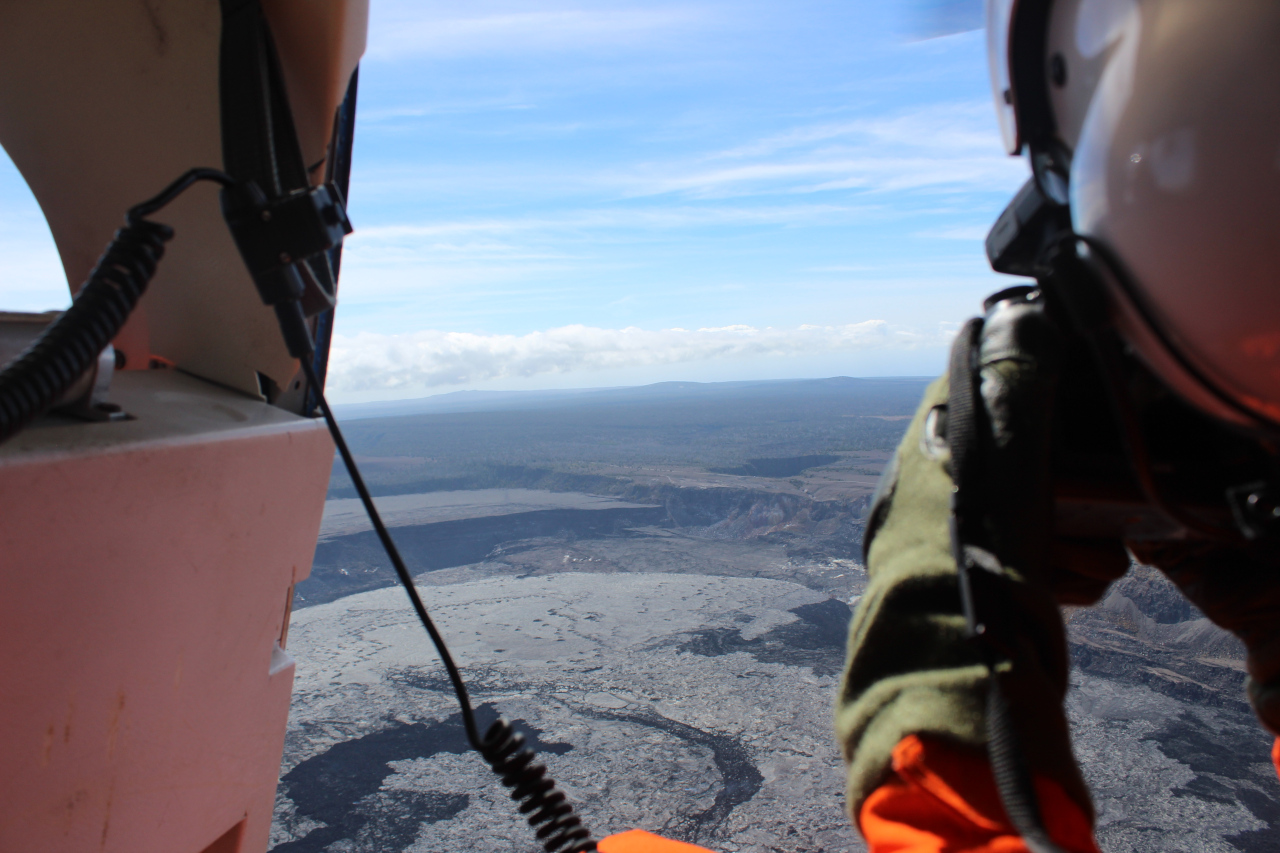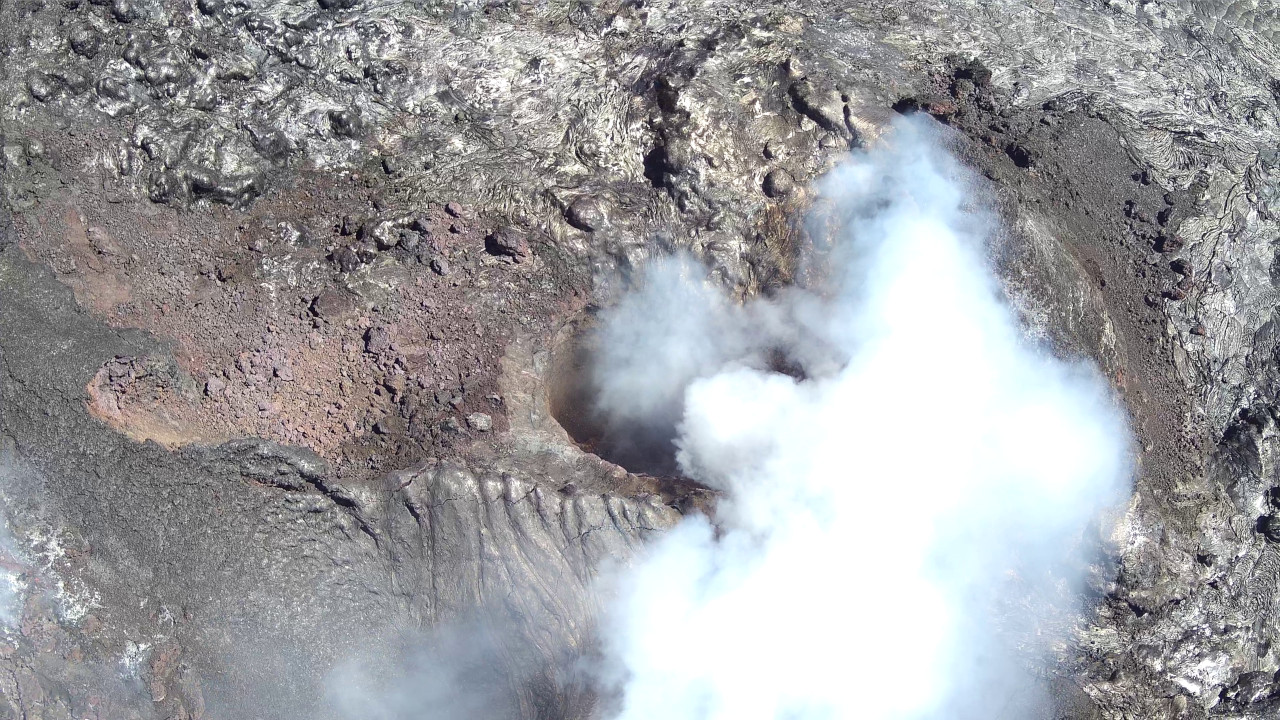(BIVN) – The ongoing eruption at the summit of Kīlauea remains paused, and scientists say the next lava fountaining episode could begin later this week.
On Monday, the USGS Hawaiian Volcano Observatory said that if the current rate of inflation continues, the next episode may occur in approximately 3-5 days.
The USGS Volcano Alert Level for Kīlauea remains at WATCH. No significant activity has been noted along Kīlauea’s East Rift Zone or Southwest Rift Zone.

USGS: “A USGS Hawaiian Volcano Observatory scientist takes a series of photos at a constant angle and zoom during a summit overflight of Kīlauea volcano. These images are then processed using structure-from-motion photogrammetry methods to construct a new digital elevation model of the summit. Scientists use this data to track how the Halema‘uma‘u crater floor is rising and to measure the volume of lava erupted during eruptive episodes.” (USGS photo by A. Ellis)
From Monday’s summit observations made by USGS scientists:
Incandescence in the crater remains very low, with no glow from north vent overnight and weak, intermittent glow from two areas higher up on the eruptive cone. Similarly, there has been no movement or incandescent breakouts from lava flows on the floor of Halemaʻumaʻu. Slow slumping of the eruptive cone is possible as it cools.
Low-level tremor and elevated degassing persist. Seismic and gas data streams indicate that gas pistoning is occurring every 3-5 minutes; however, no lava or spatter is visible at the surface in association with the pistons at this time. Average sulfur dioxide (SO2) emission rates during inter-episode pauses are typically 1,200 to 1,500 t/d, though emission rates vary on short time scales in association with gas pistoning.


by Big Island Video News8:02 am
on at
STORY SUMMARY
HAWAIʻI VOLCANOES NATIONAL PARK - Scientists calculate that the next eruptive episode may occur in the second half of this week.